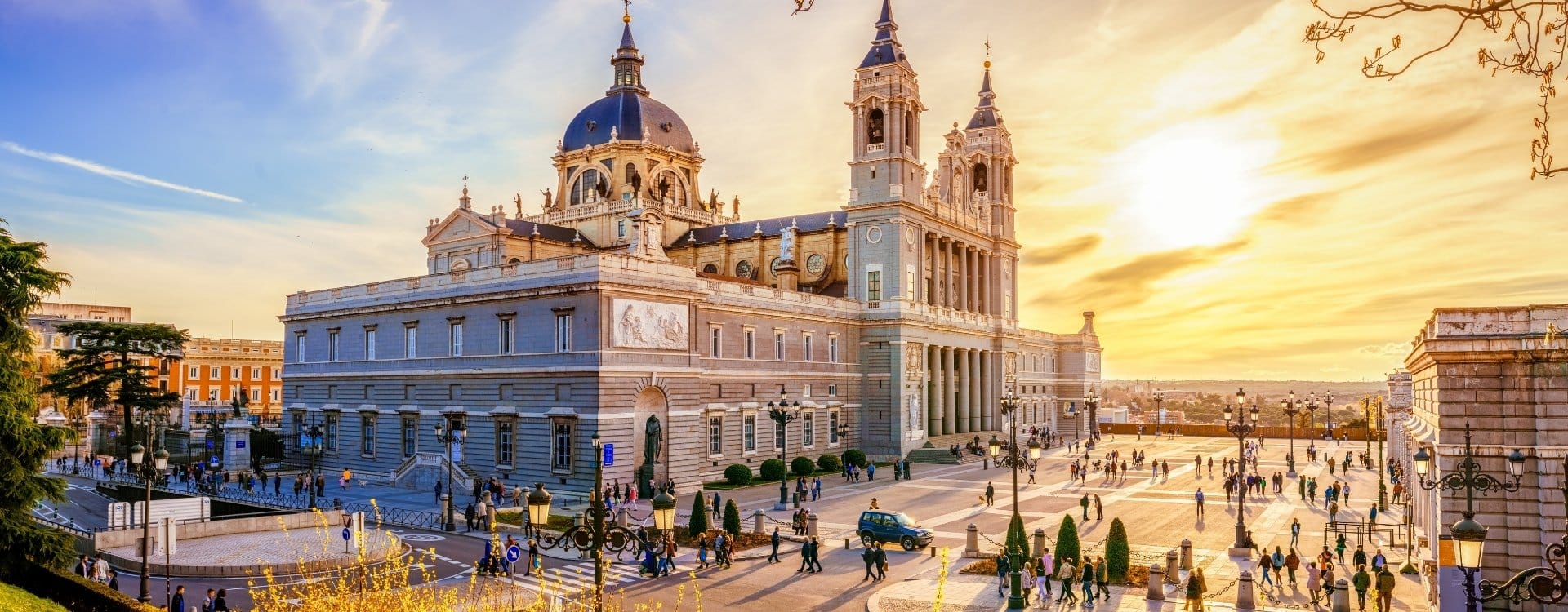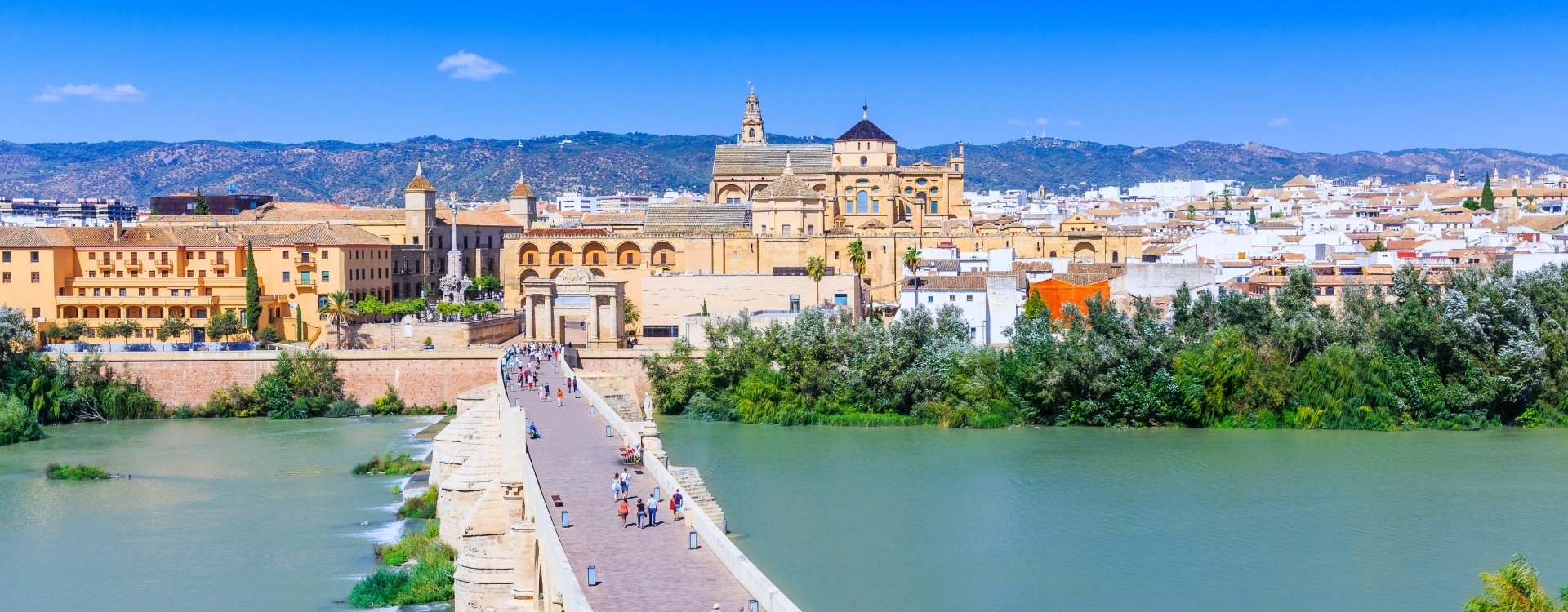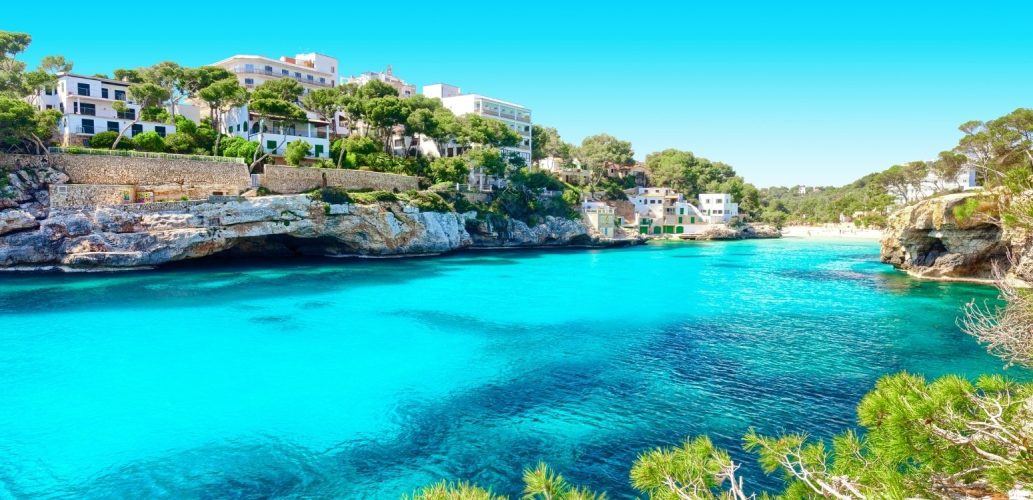Paella, wine and some of the world’s most beautiful beaches are what await you in Spain. The EU’s second largest country is an exciting destination in southern Europe with many interesting places to visit. Spain was one of the world’s first global empires, with colonies spread all over the world. So it’s no wonder that Spanish is the second most widely spoken language, with as many as 21 countries having it as their official language. It is also thanks to Spain that we have some of our most widely used vegetables and fruits today. Through the country’s spirit of discovery and many adventures on the seven seas, we have potatoes, tomatoes, peppers and beans.
Today, Spain is a constitutional monarchy with a high standard of living. The country’s economy has improved considerably since it joined the EU in 1986 and began exporting goods to other countries, especially within Europe. In the 1950s, tourism to Spain began to take off, mainly to the Balearic Islands, led by Majorca, and then also to the Canary Islands and the Costa del Sol. Spain quickly became a popular destination for tourists from Northern Europe and eventually from the rest of the world.
There are 47 UNESCO World Heritage Sites in Spain, so it’s a country that has many attractions for those who live and work here. Did you know that Spain is the country with the most bars in the EU? In addition to bars, you also have Europe’s largest food market in Spain, namely in Valencia. It is also traditional to have tapas with your wine in Spain. Originally, tapas were used to cover your drinks when you weren’t drinking them. Tapas is the plural for ‘lid’, which was put over the glass so that no flies or other bugs would end up in the drink. Today, tapas is associated with several small dishes served with a glass of wine. Cheers to this Spanish tradition!
In our guide, we’ve put together 5 hotspots in Spain that are a must if you live and work in this culturally rich southern European country.
Jobs available in Spain
- Hotel jobs, Tourism
- Cyprus, Greece, Spain
- Adventure jobs, Hotel jobs, Tourism
- Bulgaria, Croatia, Egypt, Greece, Italy, Spain, Turkey
- Hotel jobs, Leisure, Tourism
- Cyprus, Greece, Spain
- Adventure jobs, Hotel jobs, Tourism
- Bulgaria, Croatia, Egypt, Greece, Italy, Spain, Turkey
1. Granada
Granada is located in the southern region of the country known as Andalusia, with the Sierra Nevada mountain range in the background and one of Spain’s most influential universities founded by Charles V.
Historically, the Greeks, Phoenicians and Romans had lived in Granada before it was occupied by the Arabs. In the 13th century, the city flourished with its independence. Trade took off and the silk industry in particular became very important for Granada. At the end of the 15th century, the Catholic monarchs took power in Granada and the city converted to Christianity. In the 16th century, the Renaissance style took over in Granada, followed by the Baroque and Churrigueras styles, and the appearance of the city began to change. During the Franco regime in the 1950s, Granada was one of Spain’s poorest cities, but it has recovered well today and tourism is one of its main sources of income.
Don’t miss this in Granada:
The Alhambra
The palace complex in Granada is one of the best-preserved examples of the Islamic culture that characterised southern Spain for centuries. Built during the Nasrid dynasty in the 13th and 14th centuries, the Alhambra was the last Moorish kingdom before the fall of Islamic civilisation and the city’s conversion to Christianity.
The royal palace is made up of several courtyards and rooms, and there is also a bath and a mosque. The Alhambra was partially vandalised by Napoleon’s army who used the area as a fortress. In 1821, the Alhambra was further destroyed by a major earthquake in the area, but it began to be restored in the 19th century and today the Alhambra is Granada’s main tourist attraction and a UNESCO World Heritage Site.
Albaicín
A neighbourhood in the old town of Granada. The neighbourhood is located on a hill and from here you have a fantastic view of the Alhambra. There are still traces of Moorish architecture and you can see an old bath complex, some houses and restaurants.
Generalife
The summer palace and garden of the Nasrid sultan. This is where the sultan stayed during the hot summer months.
Granada Cathedral
The cathedral, which is the country’s second largest cathedral, is an excellent example of Spanish Renaissance architecture. The cathedral was built on top of Granada’s largest mosque and took around 180 years to complete. The cathedral was commissioned by Queen Isabella after the conquest of Granada. The Royal Chapel also houses the remains of Isabella and Ferdinand, considered Spain’s most beloved monarchs. The couple were also named ‘The Catholic Monarchs’ by Pope Alexander VI because of their efforts in defence of Catholicism.
2. Barcelona
Barcelona is the capital of Catalonia and one of Spain’s most popular cities, welcoming millions of tourists from all over the world every year. After Madrid, Barcelona is the most important and industrialised city in the country.
With an annual average temperature of 21 degrees, Barcelona has one of the best climates in Europe and many beaches to go to during the hot summer days.
Barcelona has 2 official languages and everywhere in the city the signs are written in both Spanish and Catalan. Barcelona is also a cultural city with many museums and monuments. Great artists such as Picasso and Gaudí have lived and worked here, and the city also hosted the 1992 Olympic Games.
Barcelona is also the most ‘international’ city in Spain, with an estimated 15% of its inhabitants originally from another country. In recent years, many new IT companies and start-ups have sprung up, attracting new employees from other countries within Europe, giving Barcelona the distinction of being Spain’s most cosmopolitan city.
If you live and work in Spain, don’t miss out on visiting Barcelona during your stay here. Barcelona is a great city with lots to see and do, so plan your visit well and don’t miss these places:
Sagrada Familia
Antoni Gaudì’s greatest creation and perhaps Barcelona’s most famous and visited tourist destination. The church was begun in 1882 and is still unfinished. 2026 has been set as the final year to complete the church to mark the centenary of Gaudì’s death.
La Rambla
Barcelona’s most famous boulevard, stretching for around 1.5 kilometres through the city centre. Here you’ll find shops, restaurants and street performers entertaining the millions of tourists who visit the avenue every year. Keep a tight grip on your bag as the area is full of pickpockets and purse snatchers.
Parc Guell
Designed and built by Gaudì, this beautiful park is unique in its kind with artwork and mosaics. Originally a housing development project, the park was a fiasco and no one wanted to buy a house here as it was considered too far from the city centre. The businessman Guell, who had invested in the project, chose to leave the area in the hands of the city, which then turned the park into a museum.
Casa Milà
In the early 1900s, the artist Gaudì was commissioned to build a home for the wealthy businessman Pere Milà. The result was the expressionist building known as La Pedrera (the quarry). The building is unique in its kind, with curved walls and sculptures, and is today a UNESCO World Heritage Site.
Picasso Museum
The museum has a collection of over 4,000 works of art from the famous Spanish artist. It offers an insight into the artist’s life from the beginning of his career to the end. Picasso was born in Malaga but lived for several years in Barcelona, where he studied art, so the city became very important to him and his artistic development.
3. Madrid
The capital of Spain and the largest city in the country. Located on the Manzanares River, Madrid was originally a Moorish fortress that became the centre of Spain’s world empire in the 17th century. Madrid was given a boost when Spain joined the EU and has been the country’s economic and cultural centre ever since.
Did you know this about Madrid?
- At 600 metres above sea level, Madrid is the highest capital city in Europe.
- With 3.2 million inhabitants, Madrid is the second largest city in the EU. Only Berlin beats the Spanish capital with its 3.6 million citizens.
- Madrid is home to the world’s oldest restaurant, which is still open today. Restaurante Botin opened in 1725 and Ernest Hemingway was a frequent visitor when he was in Madrid in 1925. His favourite dish was suckling pig cooked in a wooden oven, which still exists today.
- Madrid is one of the greenest cities in the world, with 300,000 trees and 6,500 hectares of green spaces scattered around the city.
- There is an Egyptian temple in Madrid. Yes, you read that right, the Templo de Debod is a gift to Spain from Egypt, which helped to save several monuments during the flooding of the Assuan Dam.
- Europe’s largest and the world’s second largest fish market is in Madrid. Only the Tsukiji market in Tokyo is bigger.

4. Balearic Islands
Big cities and culture aside, if you live and work in Spain, you’ll also have plenty of islands to visit, where you can indulge in some beach life. Spain has been a popular tourist destination since the 1950s because of its beautiful beaches and numerous bathing spots. If you live and work in Barcelona, you’ll find a number of beaches close to the city, and in the south of Spain there are many popular coastal cities such as Valencia, Alicante and Malaga. The Canary Islands, also part of Spain, are another popular destination for many Europeans during the grey and dreary winter months.
The Balearic Islands are a group of islands located 8-30 miles from the mainland, which have belonged to different kingdoms and countries throughout history. The Romans first conquered the archipelago but then lost power to various Vandal peoples, most of whom were Germanic. Before being conquered by Aragon, the Balearic Islands had already been under the rule of the Byzantine Empire and the Islamic Empire. After the Peace of Utrecht in 1713, the islands fell under the rule of Great Britain for around 70 years before being returned to Spain.
The Balearic Islands enjoy a pleasant climate all year round and some of the most beautiful beaches in the world, well worth a visit even in spring or autumn when not many tourists flock here.
Read more about the Balearic Islands here ⬇
Majorca
This is the largest island in the archipelago with millions of visitors every year. Here you can visit many historical sites and the beautiful cathedral of Palma. In addition, there are many award-winning restaurants here and you can also go wine tasting in Mallorca.
Menorca
About 4 miles from Mallorca, Menorca is also part of the Balearic Islands. The island also has a protected nature reserve (UNESCO Biosphere Reserve) with many bird species and a rich plant life. The lifestyle here is very calm and stress-free so it suits those who want a break and detox.
Ibiza
Ibiza is the island of contrasts. While most of us know Ibiza as one of the world’s top party islands, it’s also a haven for yoga and pilates. A healthy lifestyle is mixed with warm weather and mojitos in the evening. It’s also home to many famous restaurants and some of the world’s most beautiful beaches.
Formentera
The paradise island of Formentera is located south of Ibiza and is reached by ferry. The smallest of the Balearic Islands, Formentera gives you a bohemian feel when you arrive. From its beautiful beaches, tranquil and nature-friendly lifestyle that characterises the island, you will love life on Formentera.
5. Córdoba
The Spanish city, located in the country’s southern region of Andalucía, was one of the world’s leading centres of science and education during the Muslim Golden Age. Córdoba was a centre of excellence in biology, medicine and philosophy during its heyday. It was also one of Europe’s largest and richest cities in the 10th century.
Originally founded by the Romans, Córdoba was eventually conquered by the Moors in the 7th century. They founded the Caliphate of Córdoba, which included most of Spain and parts of North Africa. The Caliphate fell in 1236 when Córdoba was occupied by Castile, which introduced Christianity.
Today, Córdoba is an industrial city but is also known for its arts and crafts and ceramics from the Moorish period. If you live and work in Spain and want to visit Córdoba in the summer, make sure you have plenty of sun protection with you as the city has the hottest summer temperatures in Europe, with temperatures reaching almost 40 degrees. Córdoba is also the only city in the world to have 4 UNESCO World Heritage Sites as of 2018, beating even world cities like Paris and Rome.
Córdoba is also one of Spain’s top tourist destinations and a city where different cultures have left their mark, so make sure to add Córdoba to your Spain Bucket List.
Don’t miss this in Córdoba:
The Mezquita
The city’s main attraction. This unique mosque/cathedral dates back to the 10th century when Córdoba was the world centre of culture and science. The construction of the mosque was commissioned by Abd ar-Rahman I, Emir of Córdoba, and was completed in the 10th century. In the 13th century, however, the city became Christianised and the mosque was converted into a cathedral by order of Ferdinand III. Today, the building is a marvellous historical documentation of different styles and is unique in its kind.
Alcázar de los Reyes Cristianos
A palace built by Alfonso XI on the site of an old Arab castle, it was used as a headquarters for the Inquisition and as a prison in the 1930s before falling into municipal hands. Today, the palace is one of the city’s top tourist destinations where you can stroll through gardens, see a bathhouse and visit one of Europe’s largest libraries. You can also visit the palace and gardens in the evening when there is a light show by the fountain.
Jewish Quarter
A ghetto in the 12th century where the city’s Jewish population lived. Today, the Jewish Quarter is a trendy neighbourhood and is home to one of the three remaining synagogues in Spain.
The Roman bridge
Another historical landmark in Córdoba that you absolutely cannot miss. The bridge was started by the Romans during the reign of Emperor Augustus and then completed, almost 100 years later, by the Moors who gave it the look we see today. The bridge is located in the historic part of the city and a tip is to visit it at sunset when the sun’s light colours the pillars and the water a stunning orange-like colour.










